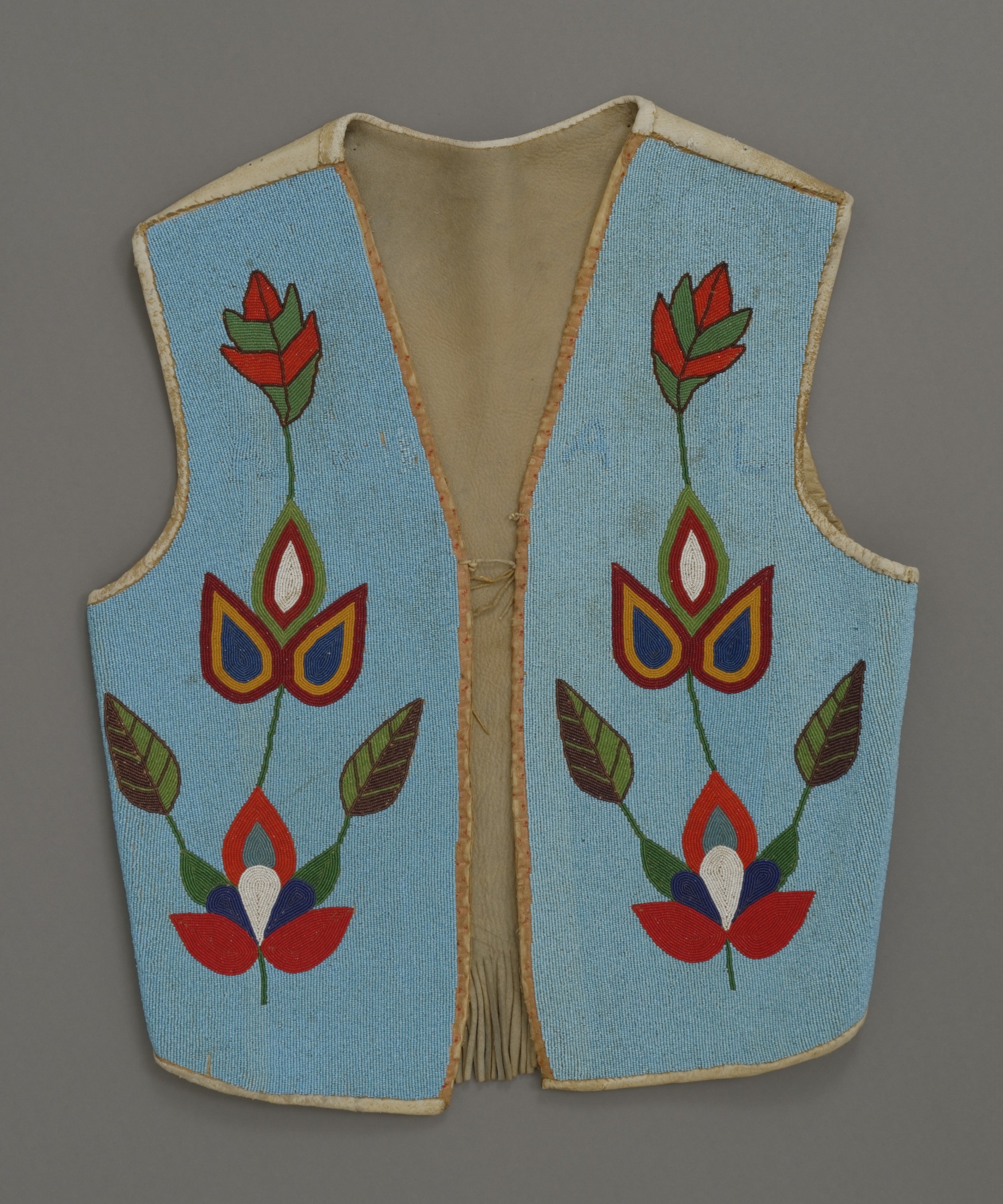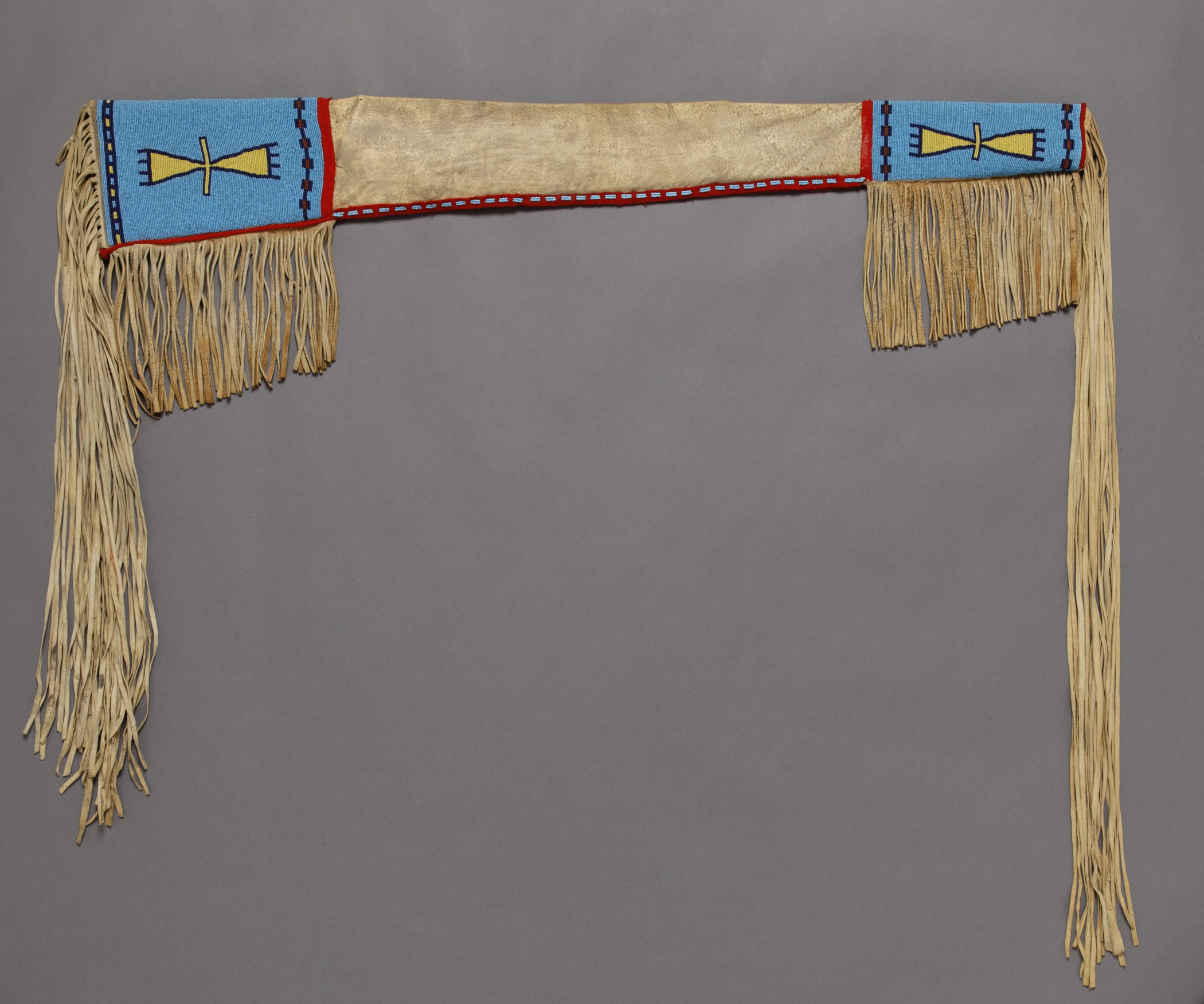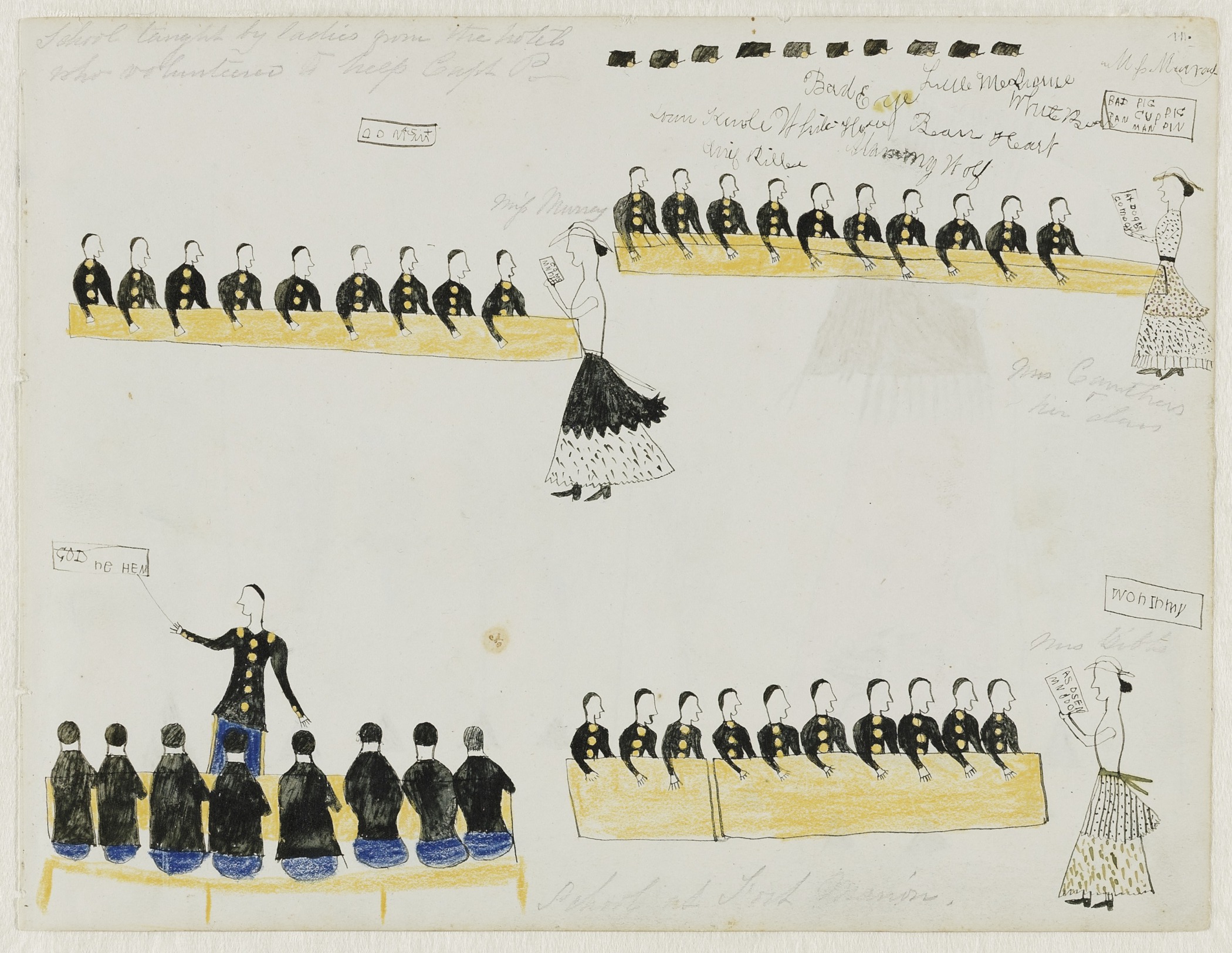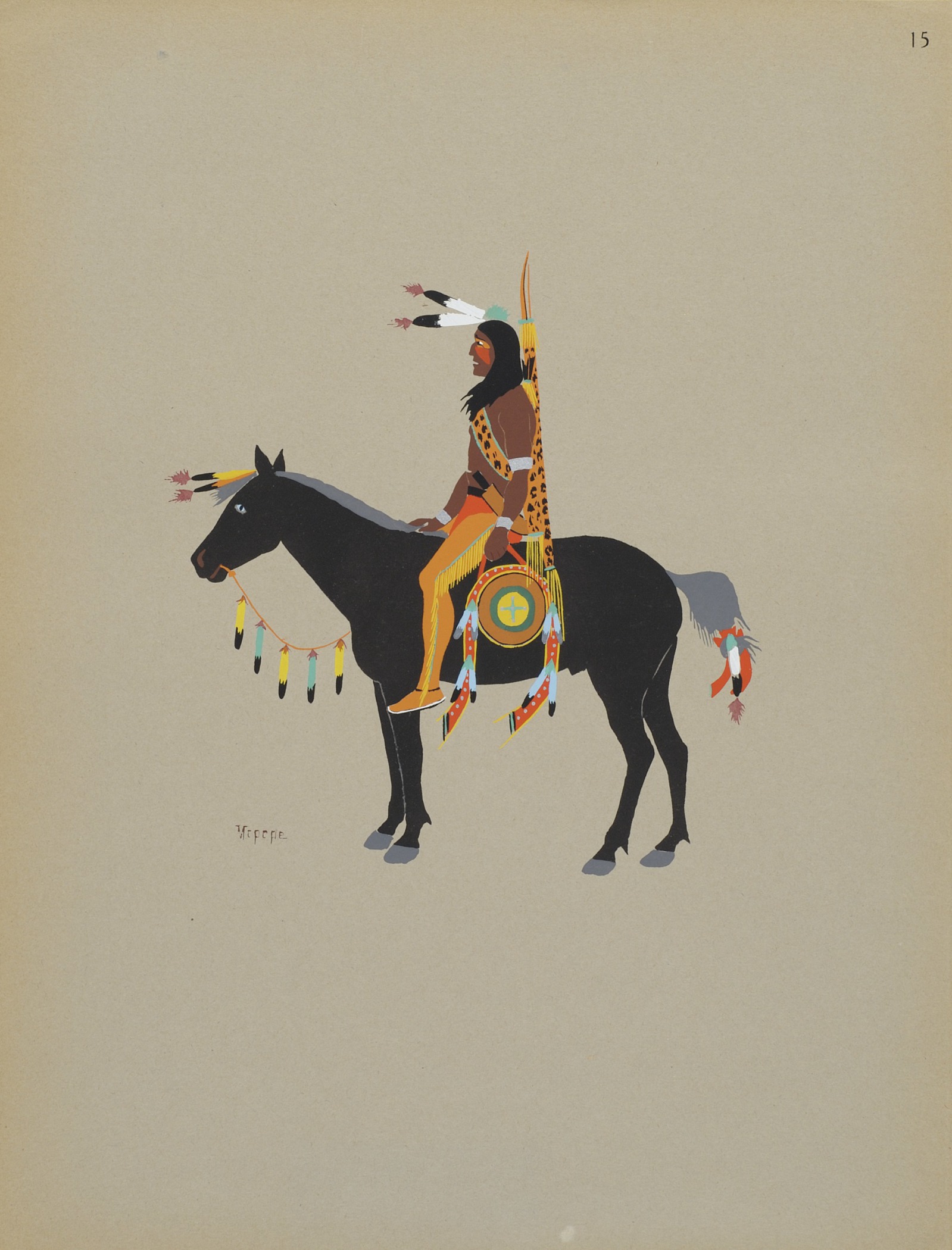Apsáalooke (Crow)
Vest once owned by Thunder Iron (Albert Lincoln)
- About 1900
- Commercial leather, glass beads, canvas lining, cotton edges, and thread
- 22 7/16 in.
Hood Museum of Art, Dartmouth College: Gift of Guido R. Rahr, Sr., Class of 1951P; 985.47.26595
visibilityLook & DiscussGlass beads were among the first items traded between Europeans and Native Americans. For centuries, Native Americans had made bone, shell, copper, and stone beads. Without metal, making beads was a difficult task. Bead makers used stone to chip hard materials into rough shapes, sand to polish them, and hand drills to create holes in the center. The beads tended to be large and were strung on thin pieces of sinew. All cultures created beads from materials close at hand, but they valued unusual beads acquired through trade. Plains cultures acquired shell beads from Northwest Coast cultures, and beads made of turquoise from the Southwest. In every community, beads were highly valued and worn as markers of status.
Albert and Mary Lincoln posing for a photograph. Photo by Richard Throssel. Courtesy of University of Wyoming, American Heritage Center
Lewis and Clark were the first Europeans to bring glass beads to the Plains. At first the beads were large, about a 1/4 to 1/2 inch in diameter, and known as pony beads. Later Europeans brought tiny seed beads. These glass beads came in a wide range of colors. They could be used in jewelry or to embellish clothing and equipment. Native Americans strung beads on sinew or thread for necklaces and fringe; embroidered, or sewed, beads onto leather or cloth; or made a fabric of beads by weaving them on a loom.
This vest was made in the late 19th century—probably by Mary Lincoln for her husband, Thunder Iron (Arthur Lincoln). It was part of a full set of regalia worn for special occasions.
explore the Object
This vest was made using a spot-stitch bead embroidery technique. Spot stitching involves stringing seed beads onto a thread and laying the beaded thread down on the surface of a piece of cloth. The string is then tacked down in spots, usually every 3 to 4 beads. This technique allows the artist to fill a space quickly and make curving designs.
The style, pattern, and composition of the vest are typical of Crow design. On the front panels, abstract floral motifs are arranged symmetrically on a solid blue background. From about 1885 to 1915, many Plains groups commonly covered articles of clothing—particularly vests—completely with glass trade beads. Such attire was made not only to be worn on special occasions, but also to demonstrate the skill of the beadworker. The vest, a nontraditional garment, was adopted from European clothing. The floral motif was used historically and may have been influenced by other tribal designs as well as European embroidery and textiles. The use of nontraditional materials and design elements in this vest demonstrates how Native Americans adapted new materials and tastes to create their own distinctive art forms.
Beadwork is a living tradition in many Native American cultures. Today, both men and women practice beadwork.
Related Objects
Dakota (Eastern Sioux), vest, about 1880. Native-tanned hide, cotton fabric, porcupine quills, silk ribbons, glass beads, dye, ink, sinew, and thread, 22 1/16 × 13 3/8 in. Hood Museum of Art, Dartmouth College: Gift of Stephen A. Lister, Class of 1963; 2008.82.
This vest, made by a Dakota woman about 1880, is an excellent example of extraordinary quillwork. In the mid-19th century, Native American women on the Plains largely replaced porcupine quills with glass beads in their designs.
Quillwork was extremely time consuming. First, a hunter had to capture and kill a porcupine before women removed and sorted the sharp, barbed quills. The finer quills, found on the neck and the belly, were best for embroidery. A craftswoman would soften the porcupine quills in water, then flatten and dye them. She would appliqué each quill between two rows of stitching. After anchoring a quill with a stitch of sinew or thread, she would fold the quill back and forth between the rows to fill the space between the stitching. At each fold, she would anchor the porcupine quill with another stitch, inserting additional porcupine quills until the design was complete.
Despite the rigidity of the quills, the maker of this vest managed to execute delicate curvilinear forms.
Compare the two vests.
What sorts of effects can an artist create using glass beads?
How are they different from the ones an artist can create using porcupine quills?
Learn More
In this video, A’aaninin curator Joe Horse Capture discusses the art of quill and beadwork and how neighboring communities influenced each others' designs.
To see examples of modern Native American beadwork, Google the work of Kiowa artist Teri Greeves or Choctaw/Cherokee artist Jeffrey Gibson.




